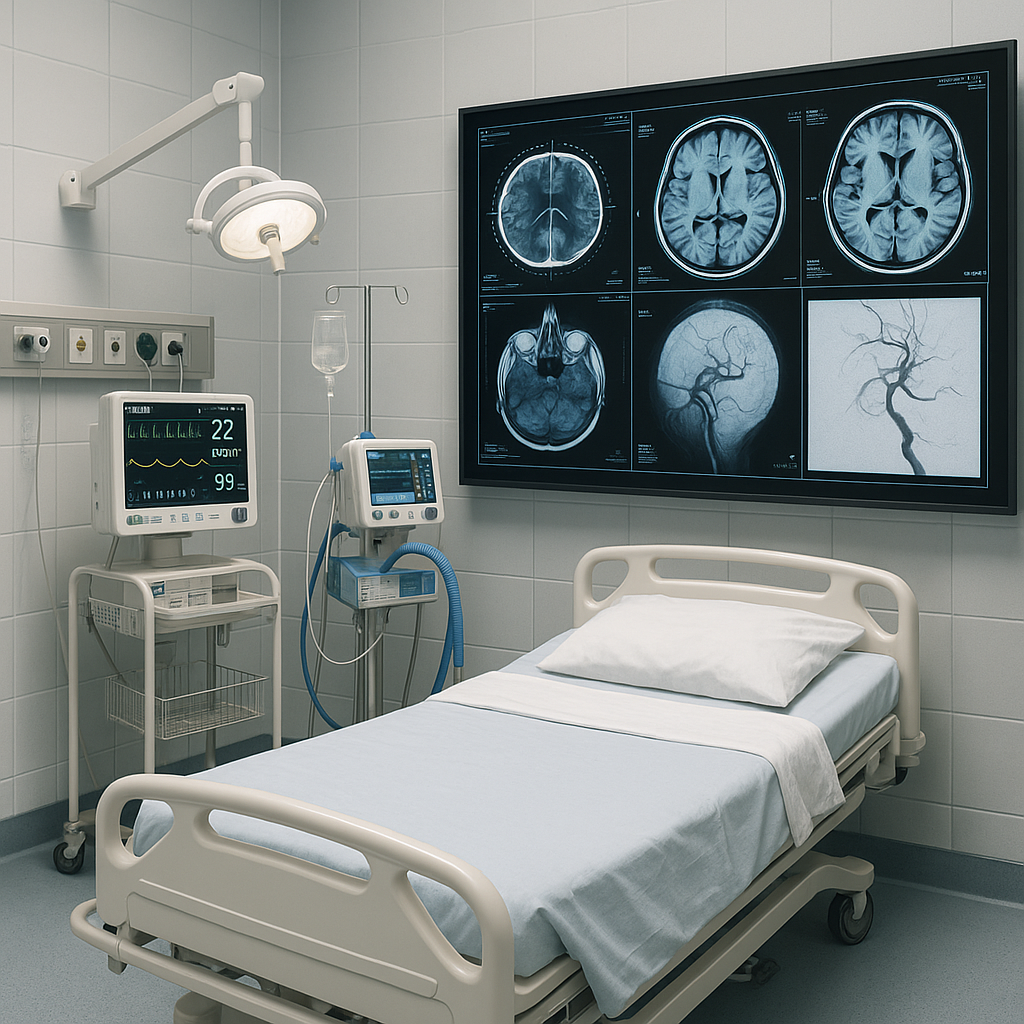A brain aneurysm—also known as a cerebral aneurysm—is a weakened area in the wall of a blood vessel in the brain that causes it to balloon or bulge. If the aneurysm ruptures, it leads to a subarachnoid hemorrhage, which can be life-threatening. Understanding this condition is crucial for every registered nurse (RN) and nursing student preparing for the NCLEX or practicing in critical care settings.
🧠 What Is a Brain Aneurysm?
A brain aneurysm occurs when an artery wall weakens, allowing blood to create a bulge. It can remain stable for years or rupture suddenly. Aneurysms most often form in the Circle of Willis, where cerebral arteries branch and are under high pressure.
⚕️ Causes and Risk Factors
As a nurse or RN, understanding the risk factors helps guide patient education and prevention efforts.
Common causes include:
- Hypertension (chronic high blood pressure)
- Atherosclerosis
- Genetic connective tissue disorders (e.g., Marfan syndrome)
- Head trauma or infection
- Smoking
- Family history of aneurysm
Risk factors nurses should monitor:
- Age (more common in adults 40–60)
- Gender (slightly more common in women)
- Excessive alcohol use
- Drug abuse (especially cocaine)
🚨 Signs and Symptoms
A ruptured brain aneurysm presents suddenly and requires immediate nursing intervention.
Before rupture (unruptured aneurysm):
- Headache (localized or severe)
- Vision changes
- Pain above or behind the eye
- Dilated pupil
- Numbness or weakness on one side of the face
After rupture:
- Sudden, severe “worst headache of my life”
- Nausea and vomiting
- Stiff neck
- Sensitivity to light (photophobia)
- Loss of consciousness
- Seizures
🧩 Diagnostic Tests
For NCLEX review and clinical practice, nurses should know these key diagnostic tools:
- CT scan: Detects bleeding in the brain.
- Lumbar puncture: Identifies blood in the cerebrospinal fluid.
- MRI/MRA: Provides detailed imaging of the aneurysm.
- Cerebral angiography: Gold standard for identifying aneurysm location and size.
💉 Nursing Care and Interventions
As a registered nurse, patient monitoring and prevention of complications are critical.
Pre-rupture care:
- Maintain blood pressure within safe limits.
- Administer antihypertensive medications as prescribed.
- Educate patient on avoiding activities that increase intracranial pressure (e.g., straining, coughing).
Post-rupture (critical care):
- Monitor neurological status frequently.
- Maintain airway and oxygenation.
- Control blood pressure carefully—avoid spikes that could worsen bleeding.
- Administer medications:
- Nimodipine: Prevents vasospasm.
- Anticonvulsants: Prevent seizures.
- Pain control: Manage discomfort safely.
Post-surgical nursing care (after clipping or coiling):
- Monitor for complications such as rebleeding or vasospasm.
- Assess vital signs and neuro status closely.
- Support family and provide education about recovery.
🩺 NCLEX Nursing Priorities
For the NCLEX, remember these priority actions:
- Assess for sudden neurological changes.
- Maintain airway and oxygen.
- Keep the head of bed elevated 30°.
- Prevent straining and coughing.
- Administer medications to control blood pressure and prevent vasospasm.
These interventions reflect nursing judgment and prioritization skills tested on the NCLEX.
📚 Nursing Education Tip
For students preparing for the NCLEX or reviewing in a nursing bundle, focus on:
- Recognizing early warning signs of increased intracranial pressure (ICP).
- Differentiating between ischemic stroke and hemorrhagic stroke.
- Understanding pharmacologic management and post-op care.
💬 Key Takeaway for RNs and Nursing Students
A brain aneurysm demands quick recognition and intervention. As a nurse, your role in assessment, monitoring, and patient education can save lives. For RN nurses and NCLEX candidates, mastering this topic builds a solid foundation in neurological nursing care.
✅ FAQ: Brain Aneurysm and Nursing Care
Maintain airway and oxygenation, then notify the healthcare provider immediately.
Nimodipine is the calcium channel blocker most commonly prescribed.
Yes. Controlling blood pressure, avoiding smoking, and limiting alcohol can lower risk.
Avoid heavy lifting, manage stress, and follow up regularly with neurologic exams.
Absolutely. It’s part of neurologic and critical care nursing, emphasizing priority actions and safety.

